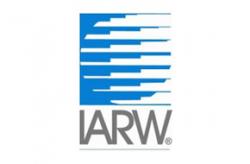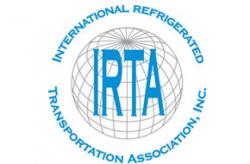Try Sitting In The Driver's seat
A point of view on warehouse-truck driver relations.
COLD FACTS magazine interviews Wesley O’Brien, Chief Logistics Officer of Frozen Logistics, to get his perspective on the state of warehouse/truck driver relations.
Frozen Logistics, based in Austin, Texas, formed in July 2020 and operates business to business and direct to customer. At the time of its launch, the company acquired Taylor Cold Storage, a family-run business in which O'Brien had been involved for years. Earlier in his career, he was a truck driver for the company.
COLD FACTS: The trucking industry is very challenged right now. What do you see as the top issues facing relations between cold storage warehousing and truck drivers?
WESLEY O’BRIEN: The answer is two-fold with both tied in importance. First is the volume of loads versus the number of drivers that are available to transport the loads. This has been an issue for a while.The second is the literal relationship between truck drivers and warehouse operators, which can come across antagonistic and us versus them. This attitude affects all parties involved.
CF: Can you detail some of these points?
WO: First, the demand for moving goods is greater than the supply of trucks and truck drivers. The reason is complicated, and they’re disruptive to getting perishables to end users. Speed to user is the idea of the food supply chain. When perishables cannot be moved, this creates a timeline issue. This is magnified when items have shelf timelines. When their movement is slowed, this creates an even shorter shelf life. The second issue – warehouse/driver relationships – is a problem that needs to be addressed because every aspect of the food supply chain must work together to achieve the goal I just stated. Truck drivers need a warehouse to deliver the goods to. Warehouses need drivers to receive and ship out the goods. Every party needs the other. We are all cogs in the wheel. When there is an antagonistic or combative relationship, this almost always has a negative effect on warehouse operations. The situation creates a supply chain issue for everyone.
CF: Are there ways a temperature-controlled warehouse can be more welcoming to truck drivers?
WO: Like an onion, the relationship is multilayered with different solutions. The primary thing is having the right mindset. This is the number one area where we can have control. But since warehouse operators are not truck drivers, we cannot control how the drivers act or react to situations. For example, a driver who shows up late might arrive with the perception it will cost them hours of waiting for another time slot — or worse, be rejected. But if the warehouse operator doesn’t question them about why they are tardy, but instead informs them of a time when a dock will open, a perceived negative can be turned into a positive. The warehouse industry needs to try to control that perception. While we want truck drivers to understand how we are trying to get numerous things done in day, we must also understand that they are trying to get in a number of miles in a day and there are many factors that affect this. We must understand multiple factors exist. If we work with drivers, maybe we can create an environment where the drivers perceive the warehouse as friendly and that we are there to help. This is something every warehouse operation can control. Then there is perception of the actual facility itself. Is it trucker friendly? Does it offer a vending area? Clean and easy to access restrooms? What other driver amenities are offered? Is there a free air compressor they can use? Are there vacuums with long hoses so drivers can clean their cabs while they wait? Such amenities can make drivers feel welcome at a facility.
A third item is technology. What technology is available so warehouse managers can get in front of issues before they become problems? There must be a software program available or under development to let us know if a truck is going to be late as soon as the driver knows they cannot physically make it to the warehouse at the given time slot. Is there some software where we can link to these trucks to know where they are, or vice versa, so they know our situation at the warehouse? There could be a situation where we’ve gotten five trucks out, there’s a window of time that is free, and we can contact incoming trucks that are biding their time at a truck stop until their time slot comes available. In this scenario, they could get in early and get out ahead of their appointment. This would be beneficial to both the truck drivers and the warehouse.
CF: Can technology help with appointment times for loading/unloading or training?
MO: Warehouses have their own portals for scheduling. Truck drivers who have a 15:00 appointment but know they cannot arrive the warehouse until 18:00 can let the warehouse know via the portal. But warehouses can also offer an incentive by reducing missed appointment fees. It would also be useful if the warehouse could use an app or the truck driver’s electronic logging system to see where that driver is. By knowing if a driver is too many miles away to make the appointment slot, we could make internal adjustments. This way we would not need to count on the driver to make these adjustments. Consider all the moving parts. If I have a 20-pound load ready to stage in the freezer and want to get it out 30 minutes before loading, if the driver doesn’t show, we have to put that load back. But if we know he is not going to make that appointment, we wouldn’t have to take that load out of the freezer in the first place. We can make adjustments and the driver doesn’t have to worry about getting a speeding ticket to make the time slot. Regarding training, there is nothing more vital. Right now, you can train workers to have the right mindset and procedures to help situations. And training Is something everyone can do. All it takes is effort and organization, no capital investment. I know finding time for training is hard because everyone is very busy. Things can get stressful and chaotic. But when operations has a team member with a bad attitude, it’s difficult to have the mindset to turn that situation around. It’s human nature to think you are right and they are wrong. But by training people how to communicate, you can achieve positive outcomes. I always say you get more flies with honey. If your approach is positive, the perception will also be positive. And who knows, it might result in more drivers calling at your facility. It’s always important to remember that one side doesn’t know what the other is up against, they only know what they are facing.
Source: Cold Facts January/February 2022 issue



